Scissors Paper Stone
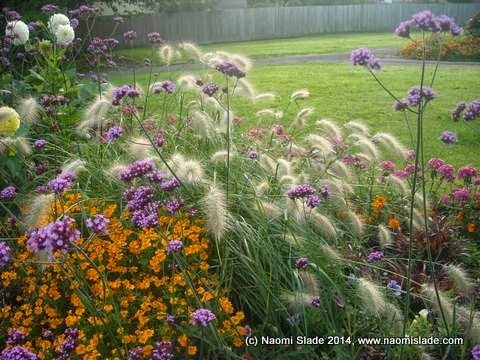 My local municipal flowerbed, back when it used to be fun.I have a bit of a bee in my bonnet about municipal planting and garden design in public spaces. It is an opportunity to bring style, excitement or just a bit of beauty to the masses; and one that is usually left to languish in unkempt evergreen scrub.
My local municipal flowerbed, back when it used to be fun.I have a bit of a bee in my bonnet about municipal planting and garden design in public spaces. It is an opportunity to bring style, excitement or just a bit of beauty to the masses; and one that is usually left to languish in unkempt evergreen scrub.This is somewhere that a little planning and creativity could reap dividends, but the norm is either uninspired, high maintenance and wasteful, or both.
Just up the road from me is a long curved flowerbed in a small public garden adjacent to a roundabout. It used to be fun, it really did. When I first met it, someone had put in some thought and the late summer display looked so good in a soft morning mist that I went home and came back with a camera.
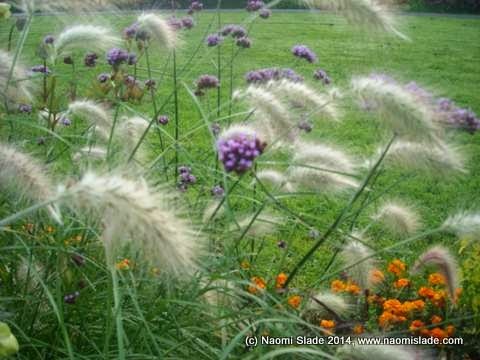 This is the same flower bed as below, five years earlier.
This is the same flower bed as below, five years earlier.It wasn’t a challenging or intellectual display, the plants are all quite ordinary but it had a cheerful flair and pizzazz. And then they dug the whole lot up a fortnight later to put in spring bulbs.*
Since then I have observed that that an astonishing amount of money seems to be spent on rather nasty selections of annual bedding. I take emphatic issue with the traditional handful-of-jelly tots-chucked-onto-a-blanket school of urban planting. Sure, young plants will expand to fill gaps but pansies with 18 inch spacings will never impressive groundcover make.
In the case of this particular patch, it has also boasted some of the nastiest pastel colour schemes imaginable. The palette looks like it has been lifted from The Catalogue of Stylish Underwear for the Older Woman**, circa 1988.
See what I mean?
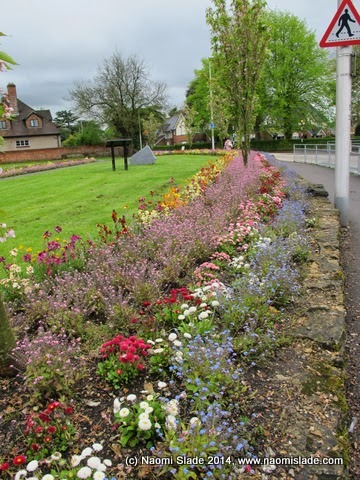 Skinny, pastel planting. Must try harder.
Skinny, pastel planting. Must try harder.In its favour: the cherry trees are nice. Which is the germ of a solution. A backbone of thoughtful permanent planting that can be topped up with transient colour, annuals or bulbs. ‘But perennials and shrubs are expensive’ I hear you sob. Well, yes, but you don’t have to change them so often. Consider it in the same light as buying good pair of shoes and polishing them every now and again as compared to buying three or four pairs of shoes that last a few months then disintegrate. Unless you are talking this-season’s cheap and transient fashion item (which we are not), it is not worth it. In the long run it will save money and effort.
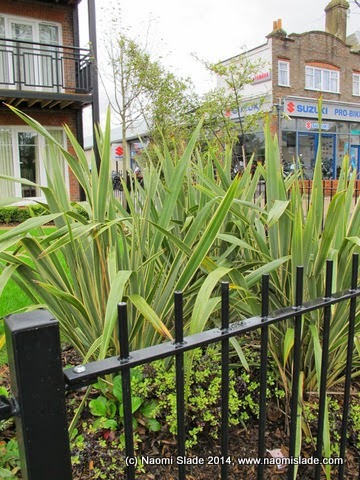 This planting scheme is about three months oldBut the key word here is ‘thoughtful’. This recent permanent border in front of a new building looks like the pots were unloaded from the truck and planted where they landed. You can see what they are trying to do - create a sequence of flowering and foliage interest with a decent evergreen backbone, but the layout is properly pants.***
This planting scheme is about three months oldBut the key word here is ‘thoughtful’. This recent permanent border in front of a new building looks like the pots were unloaded from the truck and planted where they landed. You can see what they are trying to do - create a sequence of flowering and foliage interest with a decent evergreen backbone, but the layout is properly pants.***It is a bit like playing scissors-paper-stone with plants. Phormiums are sandwiched between bamboo and mahonia, underplanted with bergenias. Pittosporumis wedged up against Photinia ‘Red Robin’ and spirea; underplanted with geraniums. Then there are some sizeable patches of bare earth - but not between the plants that are going to get really big.
This is a fight waiting to happen. An actual turf war.
Photinia trumps Pittosporum and probably spirea; they will all likely outcompete the bergenias (yes, I know they are tolerant, but the soil here gets dry). Mahonia will rapidly encroach on the phormiums and anyway the shapes are a bit odd together. The Pittosporum is already vanishing under the phormium which are doing rather well given they have only been there for six months. But in many ways it is academic since, in a space that size, bamboo in that quantity will sort out the lot given a few years. ****
Again, in its favour, the trees are nice. And I have hope for the geraniums. They are survivors.
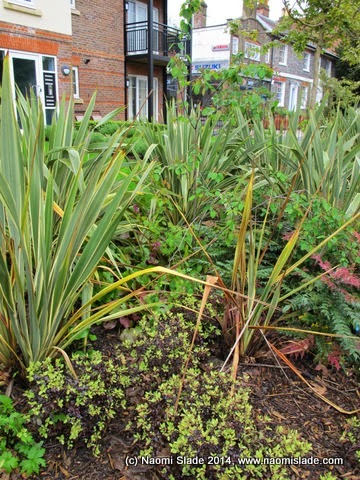 A slightly strange selection of plants
A slightly strange selection of plantsSo what do we learn from all this?
Well, firstly that when schemes are planted up there is tragically little thought given to the ultimate size of the plants and their relative size compared to one another. This is pretty much garden design 101. Horticulturists and designers, come back, all is forgiven.
Secondly, that various varieties of prunus and maple are rolled out to save dire planting choices on an alarmingly regular basis. There are, totally, like, other trees out there, people.But what is rather sad is that, as a result, people get sniffy about shrubs that are solid and decent but badly planted and badly cared for. “Dreadfully municipal”, “Dear me no, the garden will look like a roundabout!” huffs middle England. But it is not the fault of the species in question. Those that are condemned to this pitiful existence. Abandoned to long-term neglect or a tragically short life, drably combined, or spread too thinly to shine.
All in all, it gives good plants a bad name.
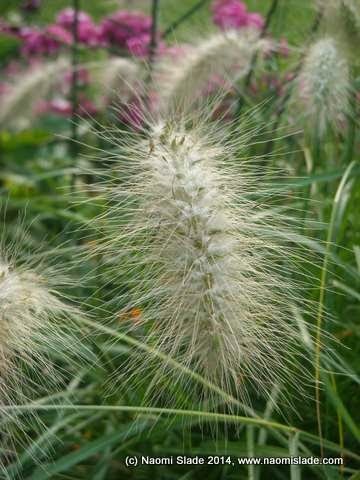 Pretty. Like a furry caterpillar.
Pretty. Like a furry caterpillar.*I benefitted from half a dozen large Verbenas though, so not all bad.
**I made this up, obviously. And I’m being *really* moderate in my disapprobation.
***In contrast I offer you the verge of the A406 near Bounds Green. Ordinary, low maintenance evergreen things like Lonicera nitida and Ceanothus are planted in a geometric pattern. It has been there for at least 15 years to my certain knowledge and could now badly use some TLC but its longevity and impact are undeniable.
****As far as I know there are no spring bulbs in all this. But the killer combination of daffodils and bamboo is rare for a reason.
Published on June 15, 2014 11:54
No comments have been added yet.



